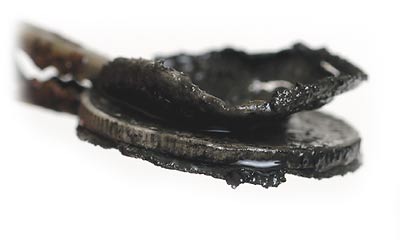This might be useful for others wanting to clean coins although all would probably agree that any valuable coins should not be cleaned under almost any circumstances in order to maintain their value. Some suggest the use of lemon juice in the solution (*one or two drops). I'm a little concerned with applying electrical current to water in my home but am about to do the same to begin cleaning a bit of iron scrap from the 1800s which i found with my X-70 yesterday.
If your process is not working, it could be that you are using the wrong Polarity and thus are electroplating (adding to the metal) instead of removing the coating. Sounds like you are doing everything correctly though. Thought you might find this article of interest.
Australian Gold & Treasure Magazine
Issue : October 2007
Achieving Professional Results at Home
[size=small]by Cary Gray[/size]
____________________________
Summary:
COINS:
"Clear Glass Container of Approximately 1 Liter Capacity
Add 700ml of Warm Water with One Teaspoon of Table Salt thoroughly dissolved.
You will need a low voltage AC/DC power transformer, similar to that used on battery/electric radios and other household appliances (*usually has two prongs to connect to the wall socket)Author used a 15Volt DC appliance transformer but 9-,12-, or 18-volt transformers are suitable.
Cut the molded plug off the transformer and connect small electrical alligator clips in it's place. The clips are available from radio part suppliers like Tandy etc. Or you can improvise using what you can scrounge at home.
Paper clips are okay for holding coins, providing you can maintain a good electrical connection.
Fix both leads securely to the container, maintaining separation at all times. It is important to keep the opposing terminals seperated to prevent a short circuit that would destroy your transformer. Ton not be tempted to cross the terminals to create a spark and see if you have a current. It will only work once and then you will have to find a new transformer.
Using the correct polarity in this process is important otherwise you will be electroplating (depositing metal) instead of removing Debris and corrosion.
When the current is correctly connected, the correct polarity will be demonstrated by a continuous stream of tiny bubbles in the electrolyte solution from the item being cleaned.
If other terminals are producing bubbles, disconnect the power immediately and reverse the electrical connection, Tag or knot one cable for reference.
Within minutes of connecting the power, the build up of deposits including the mineralised surface discoloration, will begin to lift off the coin. The loosened deposits can be washed off or gently removed using the finest steel wool available, before short immersion in the electrolysis bath. On completion, rinse the coins under fresh water, lightly brush with an old toothbrush if necessary, then polish with a soft cloth.
For much larger items and machinery parts (for example), Author used a plastic drum filled with 50 liters of warm water plus one cup of dissolved salt.... and used a 8-amp 6 volt car battery charger. Over a 24 hour period, the liquid was changed twice and both anodes and item were cleaned of built up deposits.
Author claims that physical distance of separation of relic Vs opposing electrode is as important as the solution itself. Stronger concentrations of solution will use more current without necessarily speeding up the process. Check power source periodically for heat buildup. Failure to do so or allowing a short circuit may cause or present a fire hazard. The process is not harmed if power is periodically stopped in order to check progress.
Change fluids when and if excessively contaminated with debris. If brass or copper used for the Positive Anode, it may leave your relic discolored by the unexpected transfer of the Anode base metal to your item. Overcome this problem by increasing the distance between the relic and the anode, or by using an anode of a different metal which will lift the unwanted coloring.
* Electrolysis has the ability to remove significant quantities of parent metal, which may render your find worthless.
Previously electroplated items may also lose their coating after prolonged immersion. Aluminum and light alloys may become pitted and break down."
_________________________________________
Some links to other websites with similar techniques (Pictorial How-To)
http://gometaldetecting.com/electrolysis_cleaning.htm
http://www.mycoincollecting.com/collecting/cleaning-coins-electrolysis.html



